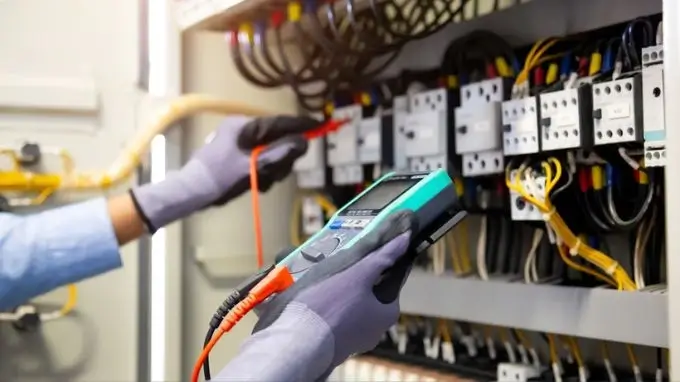Reliable electrical system troubleshooting to solve issues.
Leading Tips for Effective Electrical System Troubleshooting
Troubleshooting electric systems requires a systematic method, based in an extensive understanding of electric principles and safety and security procedures. By familiarizing oneself with circuit elements, utilizing essential devices, and sticking to an organized assessment approach, specialists can properly determine and deal with concerns. The nuances of effective repairing prolong beyond simple technical knowledge; recognizing how to document findings and focus on safety can considerably affect end results. As we discover these vital components further, it becomes clear that grasping this procedure is not simply advantageous but necessary for success in the field.
Understand the Essentials
Understanding the basics of electrical systems is necessary for effective troubleshooting, as a solid foundation allows specialists to identify and settle issues more efficiently. An extensive grasp of electrical concepts, such as voltage, existing, resistance, and power, is critical in identifying the origin of problems. Voltage is the electrical possible distinction that drives present through a circuit, while resistance opposes the circulation of existing, affecting the overall capability of the system.
Familiarity with circuit parts, including resistors, capacitors, diodes, and switches over, is likewise paramount. Each part plays a distinctive function in circuit behavior and can affect efficiency when malfunctioning. Furthermore, recognizing collection and parallel circuit setups is important, as these arrangements affect the distribution of voltage and current within the system.
Professionals must be conscious of prospective threats, such as shock and brief circuits, to implement risk-free troubleshooting techniques. By mastering these foundational ideas, professionals enhance their capability to carry out reliable diagnostics and repair work, eventually leading to boosted efficiency and reliability of electrical systems (electrical system troubleshooting).
Gather Necessary Equipment
Reliable troubleshooting of electrical systems requires the appropriate set of tools to detect and fix issues properly. Necessary tools include a multimeter, which gauges voltage, present, and resistance, allowing for precise analyses of electrical components.
In addition, protected hand devices such as screwdrivers, pliers, and cable strippers are critical for safely manipulating electric connections. It is also suggested to have a circuit tester handy to verify the visibility of voltage in outlets and wires. For even more complicated systems, a thermal imaging video camera can help identify overheating components, suggesting possible failings.

Adhere To a Systematic Method
Having gathered the suitable devices, the following action in repairing electric systems is to adhere to an organized strategy. A systematic approach ensures that specialists can determine faults effectively and accurately, reducing downtime and avoiding unnecessary repair work.
Begin by assessing the system's schematic representations and specs. This involves monitoring each element systematically, beginning from the power source and functioning in the direction of the tons.
Utilize screening devices, such as multimeters and oscilloscopes, to gather unbiased information about voltage, existing, and resistance at different points within the system. This empirical proof will guide your troubleshooting initiatives and assist to confirm or remove potential root causes of failing.
Additionally, consider ecological elements that might influence the system's performance, such as temperature level fluctuations or dampness access. A detailed inspection of circuitry, connections, and elements will make sure that all possibilities are represented.
Document Your Searchings For
Extensive documents is vital in the repairing process of electric systems. Exact records improve the efficiency of determining reoccuring problems and assist in interaction among group participants. Each finding must be meticulously noted, consisting of symptoms observed, examinations performed, and the outcomes of those examinations. electrical system troubleshooting. This technique not only aids in recognizing the origin of the trouble but additionally works as a recommendation for future see it here repairing efforts.

Additionally, maintaining a log of parts changed or fixings performed is indispensable. This info supports inventory administration and can assist evaluate the longevity and integrity of details components.
Inevitably, the documents procedure should be complete yet succinct, allowing easy access and evaluation - electrical system troubleshooting. By prioritizing thorough paperwork, service technicians can create a beneficial understanding base that not only help in current troubleshooting yet also encourages future maintenance initiatives, thus boosting general system reliability

Prioritize Precaution
Identifying the fundamental threats connected with electric systems is important for ensuring security throughout troubleshooting. Electrical shock, burns, and devices damages are just a few of the potential dangers that technicians deal with. Focusing on precaution is not just a lawful obligation however additionally an ethical crucial that safeguards both the professional and the surrounding environment.
Before beginning any kind of troubleshooting task, specialists must wear that site ideal personal protective devices (PPE), consisting of shielded gloves, safety glasses, and flame-resistant garments. Making certain that the workspace is dry and devoid of mess can significantly minimize the threat of crashes. It is vital to de-energize circuits before beginning any type of work, confirming that they are not live with the use of a multimeter or voltage tester.
Establishing have a peek here clear communication protocols with staff member is additionally essential; this makes certain that every person recognizes possible threats and the standing of the electric system being dealt with. Finally, having an emergency response plan in position can confirm invaluable in case of an incident. By focusing on safety and security measures, technicians can properly minimize dangers and promote a much safer work environment.
Final Thought
Efficient electrical system repairing relies upon an extensive understanding of fundamental concepts and a methodical strategy. By gathering important devices, adhering to organized examination techniques, and diligently documenting searchings for, the troubleshooting procedure ends up being extra effective and dependable. Focusing on safety actions guarantees the health of individuals entailed and the integrity of the electrical system. Applying these techniques will certainly enhance the repairing experience, leading to quicker resolutions and enhanced operational effectiveness in electric systems.